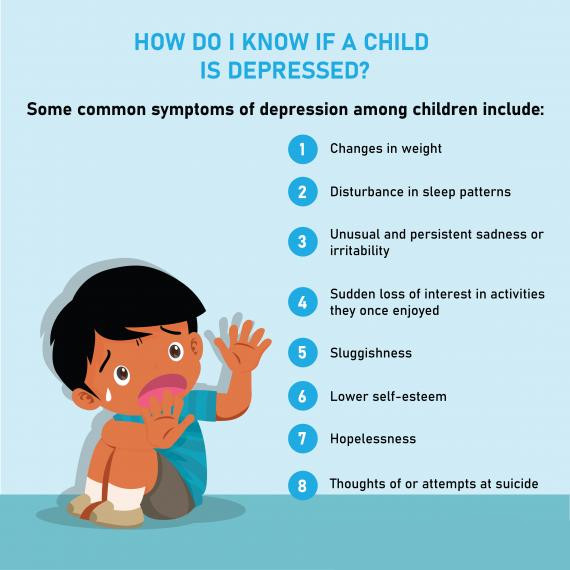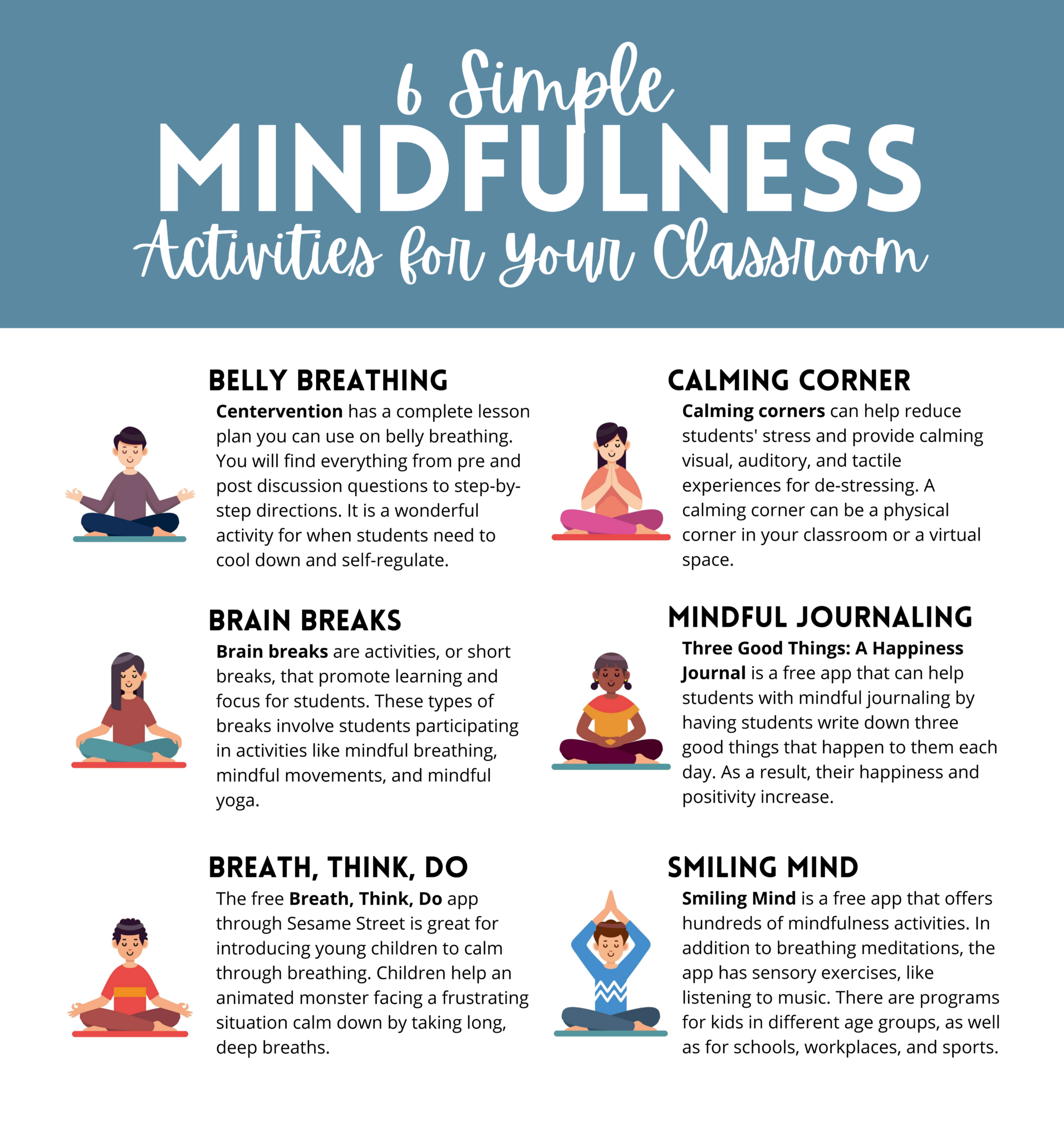
Play and social interaction are fundamental to children's mental health development
Article Overview
This comprehensive guide covers essential aspects of children's mental health, from early identification of symptoms to professional intervention strategies. Whether you're a parent, educator, or healthcare professional, this resource provides actionable insights for supporting children's emotional wellbeing.
Understanding Children's Mental Health: The Foundation of Wellbeing
Children's mental health encompasses their psychological, emotional, and social wellbeing. It affects how children think, feel, and behave, influencing their ability to handle stress, relate to others, and make healthy choices. Unlike adult mental health, children's psychological development occurs in stages, making early intervention and support crucial for long-term success.
Mental health in children is not simply the absence of mental health disorders. It includes the ability to develop healthy relationships, cope with challenges, learn effectively, and experience joy and happiness. When children have good mental health, they can reach their developmental milestones, build resilience, and thrive in their daily activities.
The importance of addressing children's mental health cannot be overstated. According to recent studies, approximately 1 in 5 children experience a mental health disorder, yet many of these conditions go undiagnosed and untreated. Early identification and intervention can significantly improve outcomes and prevent more serious mental health challenges in adolescence and adulthood.
Why Children's Mental Health Matters
Mental health is the foundation for learning, growth, and happiness in childhood. When children have strong mental health, they develop better academic performance, stronger relationships, and improved physical health. Investing in children's mental health creates a positive ripple effect that benefits families, schools, and entire communities.
The Current State of Children's Mental Health
Recent data reveals concerning trends in children's mental health. The prevalence of anxiety, depression, and behavioral disorders has increased significantly over the past decade. Factors contributing to this rise include social media pressure, academic stress, family instability, trauma exposure, and most recently, the impact of global events like the COVID-19 pandemic.
However, increased awareness has also led to better understanding and more resources. Schools are implementing social-emotional learning programs, healthcare providers are developing specialized pediatric mental health services, and communities are creating supportive environments for children and families facing mental health challenges.
Recognizing Mental Health Challenges in Children

Recognizing early warning signs is crucial for timely intervention
Identifying mental health issues in children can be challenging because children often lack the vocabulary to express their feelings and may exhibit symptoms differently than adults. Additionally, some behaviors that appear problematic may be normal developmental phases, making professional assessment important for accurate diagnosis.
Common Mental Health Conditions in Children
Anxiety Disorders: Anxiety is one of the most common mental health conditions affecting children. While some worry is normal, persistent anxiety that interferes with daily activities, school performance, or relationships may indicate an anxiety disorder. Types include generalized anxiety disorder, social anxiety, separation anxiety, and specific phobias.
Children with anxiety may exhibit physical symptoms such as stomachaches, headaches, or difficulty sleeping. They might avoid certain situations, appear overly worried about future events, seek constant reassurance, or have difficulty concentrating. Social anxiety can manifest as extreme shyness, reluctance to participate in group activities, or fear of speaking in class.
Depression: Childhood depression affects mood, thoughts, and behavior, impacting a child's ability to function normally. Unlike adults, children with depression may not appear sad but instead show irritability, anger, or behavioral problems. They may lose interest in activities they once enjoyed, experience changes in appetite or sleep patterns, or express feelings of worthlessness.
Depression in children can also manifest as academic decline, social withdrawal, excessive guilt, or difficulty making decisions. In severe cases, children may express thoughts of self-harm or suicide, requiring immediate professional intervention.
Attention-Deficit/Hyperactivity Disorder (ADHD): ADHD affects a child's ability to pay attention, control impulsive behaviors, and regulate activity levels. Symptoms typically appear before age 12 and occur in multiple settings, such as home and school. Children with ADHD may struggle with organization, following instructions, completing tasks, or sitting still during appropriate times.
Critical Warning Signs
- Persistent sadness or hopelessness lasting more than two weeks
- Extreme behavioral changes or mood swings
- Social withdrawal from friends and family
- Declining academic performance or school refusal
- Changes in eating or sleeping patterns
- Excessive worry or fear that interferes with daily activities
- Self-harm behaviors or expressions of suicidal thoughts
- Aggressive or destructive behavior
- Regression to younger behaviors
- Substance use or risky behaviors
Age-Specific Manifestations
Preschoolers (Ages 3-5): Mental health challenges in young children often appear as behavioral issues, developmental delays, or difficulty with emotional regulation. Signs may include excessive tantrums, clinginess, aggression, sleep problems, or regression in toilet training or language skills.
School-Age Children (Ages 6-11): As children enter school, mental health issues may become more apparent through academic struggles, peer relationship difficulties, or behavioral problems in structured settings. Children this age may begin to verbalize their feelings more clearly, making assessment somewhat easier.
Adolescents (Ages 12-18): Teen mental health challenges often intensify due to hormonal changes, increased social pressures, and identity development. Symptoms may include risk-taking behaviors, substance use, self-harm, eating disorders, or significant mood changes that persist beyond typical teenage behavior.
The Role of Families in Supporting Children's Mental Health

Strong family support systems are crucial for children's mental health recovery and resilience
Families play the most significant role in supporting children's mental health. The home environment, family relationships, and parenting approaches directly impact a child's emotional development and ability to cope with challenges. Creating a supportive family environment involves understanding, patience, and active participation in the child's mental health journey.
Building a Supportive Home Environment
A mentally healthy home environment is characterized by open communication, consistent routines, emotional availability, and unconditional love. Parents and caregivers should strive to create safe spaces where children feel comfortable expressing their feelings without fear of judgment or punishment.
Establishing regular family routines provides stability and predictability, which are especially important for children experiencing mental health challenges. These routines might include family meals, bedtime rituals, weekly activities, or designated times for individual attention with each child.
Communication is perhaps the most critical element of family support. Parents should model healthy emotional expression, validate children's feelings, and teach appropriate coping strategies. This involves active listening, asking open-ended questions, and avoiding dismissive responses to children's concerns.
Creating a Mental Health-Friendly Home
- Maintain consistent daily routines and expectations
- Designate quiet spaces for relaxation and decompression
- Limit screen time and encourage physical activities
- Practice mindfulness and stress-reduction techniques as a family
- Celebrate achievements and progress, no matter how small
- Ensure adequate sleep schedules for all family members
- Provide nutritious meals and snacks to support brain health
- Create opportunities for positive family bonding
Effective Communication Strategies
Communicating with children about mental health requires age-appropriate language, patience, and sensitivity. Parents should normalize conversations about feelings and mental health, making it as routine as discussing physical health. This helps reduce stigma and encourages children to seek help when needed.
When children express difficult emotions or concerning thoughts, parents should respond with empathy and support rather than immediately trying to fix the problem. Sometimes children need to be heard and validated before they're ready to problem-solve or accept help.
It's also important for parents to share their own age-appropriate struggles and coping strategies. This helps children understand that mental health challenges are common and manageable, and that seeking help is a sign of strength, not weakness.
Supporting Siblings and Family Dynamics
When one child in a family experiences mental health challenges, it affects the entire family system. Siblings may feel confused, scared, or resentful about the additional attention their brother or sister receives. Parents must balance providing necessary support to the child in need while maintaining relationships with other children.
Family therapy can be beneficial in these situations, helping all family members understand the mental health condition, develop coping strategies, and maintain healthy relationships. Individual support for siblings may also be necessary to address their specific needs and concerns.
Professional Mental Health Services for Children

Professional therapy provides specialized support tailored to children's developmental needs
Professional mental health services are essential when children's mental health challenges exceed what families and schools can address independently. These services range from assessment and diagnosis to various forms of therapy and, in some cases, medication management. Understanding available options helps families make informed decisions about their child's care.
Types of Mental Health Professionals
Child Psychologists: Licensed psychologists specializing in children and adolescents provide assessment, diagnosis, and various forms of therapy. They cannot prescribe medication but offer evidence-based treatments such as cognitive-behavioral therapy, play therapy, and family therapy.
Child Psychiatrists: Medical doctors who specialize in mental health can provide comprehensive assessment, therapy, and medication management when necessary. They often work with other professionals to provide holistic care for children with complex mental health needs.
Licensed Clinical Social Workers (LCSWs): These professionals provide individual, group, and family therapy while also connecting families with community resources and support services. They often work in schools, hospitals, or community mental health centers.
School Counselors and Psychologists: These professionals work within educational settings to provide support, assessment, and intervention services. They collaborate with teachers, families, and external mental health providers to support children's academic and emotional success.
Evidence-Based Treatment Approaches
Cognitive-Behavioral Therapy (CBT): CBT helps children identify and change negative thought patterns and behaviors that contribute to mental health challenges. This approach is particularly effective for anxiety, depression, and behavioral disorders. Therapists use age-appropriate techniques such as games, worksheets, and role-playing to teach coping skills.
Play Therapy: Specially trained therapists use play as the primary medium for communication and healing with younger children. Through play, children can express feelings, work through traumatic experiences, and develop problem-solving skills in a natural, comfortable environment.
Family Therapy: This approach involves the entire family in treatment, recognizing that mental health challenges affect family systems. Family therapy helps improve communication, resolve conflicts, and develop strategies for supporting the child's mental health while maintaining healthy family relationships.
Group Therapy: Group settings allow children to connect with peers facing similar challenges, reducing isolation and providing opportunities to practice social skills. Group therapy can be particularly beneficial for children with social anxiety, grief, or behavioral issues.
When to Seek Professional Help
Consider professional mental health services when:
- Symptoms persist for more than two weeks despite family support
- The child's functioning is significantly impaired at home, school, or with peers
- Behaviors pose safety risks to the child or others
- Family strategies are not effectively managing the child's symptoms
- The child expresses thoughts of self-harm or suicide
- Multiple systems (home, school, community) are concerned about the child
Medication Considerations
Medication may be recommended for children with severe mental health conditions or when therapy alone is insufficient. The decision to use psychiatric medication in children requires careful consideration of benefits, risks, and alternatives. Child psychiatrists work closely with families to monitor effectiveness and side effects.
Common medications used in pediatric mental health include stimulants for ADHD, selective serotonin reuptake inhibitors (SSRIs) for anxiety and depression, and mood stabilizers for bipolar disorder. All medication decisions should involve thorough discussion between healthcare providers, parents, and when appropriate, the child.
The School's Role in Mental Health Support
Schools play a crucial role in supporting children's mental health as they are often the first to notice changes in behavior, academic performance, or social functioning. Educational environments that prioritize mental health create conditions for all students to thrive academically and emotionally.
School-Based Mental Health Programs
Many schools now implement comprehensive mental health programs that include prevention, early intervention, and treatment services. These programs may offer individual and group counseling, crisis intervention, social-emotional learning curricula, and mental health education for students, families, and staff.
Social-emotional learning (SEL) programs teach children essential skills such as emotional awareness, self-regulation, empathy, and responsible decision-making. These skills form the foundation for mental health and are integrated into academic instruction and school culture.
Positive Behavioral Interventions and Supports (PBIS) is another approach that creates positive school climates by teaching appropriate behaviors, providing consistent expectations, and using data to make decisions about student support needs.
Collaboration Between Schools and Families
Effective mental health support requires strong collaboration between schools and families. This partnership involves regular communication about the child's progress, consistent implementation of strategies across settings, and shared problem-solving when challenges arise.
Schools may develop individualized education plans (IEPs) or 504 plans for students with mental health conditions that significantly impact their academic performance. These plans outline specific accommodations, modifications, and support services to help students succeed in school.
Mindfulness and Coping Strategies for Children

Mindfulness activities help children develop emotional regulation and stress management skills
Teaching children mindfulness and coping strategies provides them with lifelong tools for managing stress, regulating emotions, and maintaining mental health. These skills can be adapted for different ages and developmental levels, making them accessible to all children.
Age-Appropriate Mindfulness Techniques
Breathing Exercises: Simple breathing techniques help children calm their nervous system and manage anxiety or anger. Techniques such as "balloon breathing" (imagining filling and deflating a balloon in their belly) or "flower and candle breathing" (smelling a flower and blowing out a candle) make breathing exercises engaging for young children.
Body Awareness: Progressive muscle relaxation adapted for children helps them recognize physical tension and learn to release it. Activities like "robot and rag doll" (alternating between tense and relaxed positions) teach body awareness in playful ways.
Mindful Observation: Encouraging children to use their senses mindfully helps them stay present and reduce worry about the future or past. Activities might include mindful eating (focusing on taste, texture, and smell), nature observation, or listening games.
Emotion Regulation: Teaching children to identify, name, and manage emotions is fundamental to mental health. Tools such as emotion wheels, feeling thermometers, or emotion regulation zones help children understand and communicate their emotional experiences.
Daily Mindfulness Practices for Children
- Morning intention setting or gratitude practice
- Mindful transitions between activities
- Breathing breaks during stressful moments
- Bedtime relaxation or meditation
- Mindful movement or yoga
- Gratitude journaling or drawing
- Nature-based mindfulness activities
- Mindful eating practices
Building Emotional Intelligence
Emotional intelligence involves the ability to recognize, understand, and manage emotions effectively. Children with strong emotional intelligence are better equipped to handle stress, build relationships, and navigate social situations successfully.
Parents and educators can support emotional intelligence development by modeling emotional awareness, validating children's feelings, teaching emotion vocabulary, and providing opportunities to practice empathy and social skills.
Stress Management for Children
Children experience stress from various sources including academic pressure, social challenges, family changes, and traumatic events. Teaching age-appropriate stress management techniques helps children develop resilience and prevents stress from becoming overwhelming.
Effective stress management strategies for children include physical activity, creative expression, time in nature, adequate sleep, healthy nutrition, and strong social connections. Creating a "coping toolbox" with various strategies allows children to choose techniques that work best for different situations.
Building Resilience in Children
Resilience is the ability to bounce back from adversity, adapt to challenges, and maintain mental health despite difficult circumstances. While some children seem naturally resilient, resilience can be developed and strengthened through intentional practices and supportive relationships.
Components of Resilience
Secure Relationships: Children develop resilience through stable, nurturing relationships with caregivers, teachers, and other significant adults. These relationships provide emotional safety, guidance, and support during difficult times.
Self-Efficacy: Believing in one's ability to handle challenges and influence outcomes contributes significantly to resilience. Children develop self-efficacy through successful experiences, appropriate challenges, and recognition of their capabilities.
Problem-Solving Skills: Resilient children can identify problems, generate solutions, and implement strategies effectively. These skills are developed through practice, guidance, and opportunities to work through age-appropriate challenges independently.
Emotional Regulation: The ability to manage intense emotions and maintain equilibrium during stress is fundamental to resilience. Children learn emotional regulation through modeling, practice, and supportive coaching from adults.
Fostering Resilience in Daily Life
Resilience is built through everyday experiences and interactions. Parents and educators can foster resilience by providing appropriate challenges, allowing children to experience manageable failures, teaching problem-solving skills, and emphasizing effort over outcomes.
Encouraging children to develop interests and talents provides sources of confidence and joy that sustain them during difficult times. Whether through sports, arts, academics, or community service, these activities help children build identity and self-worth beyond their challenges.
Resilience-Building Activities
- Encourage age-appropriate independence and decision-making
- Teach children to reframe negative situations and find silver linings
- Practice gratitude regularly through journaling or family discussions
- Provide opportunities for children to help others and contribute meaningfully
- Share family stories of overcoming challenges and perseverance
- Celebrate effort, progress, and learning from mistakes
- Encourage healthy risk-taking and exploration
- Teach children to identify and use their strengths
Prevention and Early Intervention Strategies
Preventing mental health problems is more effective and less costly than treating established conditions. Prevention strategies focus on building protective factors, reducing risk factors, and creating supportive environments that promote mental health for all children.
Universal Prevention Approaches
Universal prevention strategies benefit all children regardless of their risk level. These approaches include social-emotional learning programs in schools, community-wide mental health awareness campaigns, and policies that support child and family wellbeing.
Creating trauma-informed environments in schools and communities helps prevent the development of mental health problems following adverse experiences. These environments prioritize safety, trustworthiness, collaboration, and cultural humility while recognizing the impact of trauma on behavior and learning.
Targeted Prevention for At-Risk Children
Children facing specific risk factors such as family mental illness, poverty, trauma exposure, or social isolation may benefit from targeted prevention programs. These interventions provide additional support and skill-building opportunities to prevent the development of mental health conditions.
Examples of targeted prevention include support groups for children of parents with mental illness, mentoring programs for at-risk youth, and enhanced services for families experiencing significant stress or instability.
Early Intervention Principles
Early intervention involves identifying and addressing mental health concerns as soon as they emerge, before they become severe or chronic. This approach requires collaboration between families, schools, healthcare providers, and community organizations to ensure timely access to appropriate services.
Effective early intervention is individualized, family-centered, culturally responsive, and based on the child's strengths and needs. It may include brief counseling, skill-building groups, family support services, or coordination with other professionals.
Cultural Considerations in Children's Mental Health
Cultural factors significantly influence how mental health is understood, expressed, and addressed within different communities. Effective mental health support must be culturally responsive and recognize the diverse backgrounds, values, and experiences of children and families.
Understanding Cultural Perspectives
Different cultures have varying beliefs about mental health, emotional expression, family roles, and help-seeking behaviors. Some cultures may emphasize collective rather than individual wellbeing, while others may have specific cultural explanations for mental health symptoms.
Mental health professionals and educators must understand these cultural perspectives to provide effective, respectful care. This includes recognizing that symptoms may be expressed differently across cultures and that traditional healing practices may complement conventional treatment approaches.
Addressing Barriers to Care
Cultural and linguistic minorities often face barriers to accessing mental health services, including language differences, lack of culturally competent providers, mistrust of systems, and stigma around mental health treatment.
Overcoming these barriers requires community engagement, culturally adapted interventions, diverse mental health workforce development, and policies that address systemic inequities in mental health access and quality.
Technology and Children's Mental Health
Technology plays an increasingly significant role in children's lives, offering both opportunities and challenges for mental health. While excessive screen time and social media use can contribute to mental health problems, technology can also provide valuable resources and interventions.
Digital Wellness Strategies
Teaching children digital wellness involves helping them develop healthy relationships with technology. This includes setting appropriate boundaries around screen time, choosing high-quality content, recognizing the difference between online and offline relationships, and understanding how social media can impact self-esteem and social comparison.
Parents and educators should model healthy technology use and create tech-free zones and times that prioritize face-to-face interaction, physical activity, and other non-digital activities that support mental health.
Beneficial Uses of Technology
When used appropriately, technology can support children's mental health through educational apps, online therapy platforms, mindfulness and meditation apps, and virtual support groups. These tools can make mental health resources more accessible, especially for families in rural areas or those with limited access to traditional services.
Technology can also facilitate communication between children, families, and mental health providers, enabling more coordinated care and ongoing support between appointments.
Crisis Intervention and Safety Planning
Some children may experience mental health crises that require immediate intervention to ensure safety. Parents, educators, and community members must know how to recognize crisis situations and respond appropriately while maintaining the child's dignity and preserving relationships.
Recognizing Mental Health Emergencies
Mental health emergencies in children may include active suicidal or self-harm behaviors, severe psychotic symptoms, extreme agitation or aggression that poses safety risks, or complete inability to function in daily activities. These situations require immediate professional intervention and may necessitate emergency department evaluation or psychiatric hospitalization.
It's important to distinguish between mental health emergencies and challenging behaviors that, while concerning, do not pose immediate safety risks. When in doubt, it's better to err on the side of caution and seek professional consultation.
Crisis Response Strategies
During a mental health crisis, adults should remain calm, ensure immediate safety, listen without judgment, avoid making promises they cannot keep, and connect the child with appropriate professional help. It's crucial to involve the child in safety planning and to follow up consistently after the crisis has passed.
Crisis intervention should always be followed by comprehensive assessment and ongoing support to prevent future crises and address underlying mental health needs.
Emergency Mental Health Resources
- National Suicide Prevention Lifeline: 988
- Crisis Text Line: Text HOME to 741741
- Local emergency services: 911
- Children's hospital emergency departments
- Mobile crisis response teams
- School counselors and administrators
- Pediatrician or family doctor
- Local community mental health centers
The Long-Term Impact of Children's Mental Health
Investing in children's mental health has profound long-term benefits that extend far beyond childhood. Children who receive appropriate mental health support develop stronger coping skills, better relationships, improved academic and career outcomes, and reduced risk of mental health problems in adulthood.
Academic and Career Success
Good mental health is closely linked to academic achievement, school engagement, and future career success. Children with untreated mental health conditions are more likely to experience academic difficulties, school dropout, and limited career opportunities. Conversely, children who receive mental health support often show improved academic performance and increased educational attainment.
Social and Relationship Benefits
Mental health support helps children develop essential social skills, emotional intelligence, and the ability to form healthy relationships. These skills contribute to better family relationships, friendships, and eventual romantic partnerships. Children who learn to manage their emotions and communicate effectively are better equipped for success in all areas of life.
Economic and Societal Impact
From a broader perspective, investing in children's mental health provides significant economic and societal benefits. Early intervention reduces the need for more intensive and expensive treatments later in life, decreases healthcare costs, and increases productivity and economic contribution as children become adults.
Communities with strong children's mental health systems experience reduced crime rates, improved educational outcomes, and greater social cohesion. The ripple effects of supporting children's mental health extend to families, schools, and entire communities.

Engaging mindfulness activities make mental health support enjoyable and accessible for children
Moving Forward: Creating Mental Health-Supportive Communities
Supporting children's mental health requires coordinated efforts from individuals, families, schools, healthcare systems, and communities. Creating truly supportive environments involves policy changes, resource allocation, professional development, and cultural shifts that prioritize children's emotional wellbeing alongside their physical health and academic achievement.
Community-Wide Approaches
Effective community mental health initiatives involve multiple sectors working together to create comprehensive support systems. This might include schools implementing social-emotional learning, healthcare systems training pediatric providers in mental health screening, community organizations offering family support programs, and policymakers ensuring adequate funding for children's mental health services.
Communities can also work to reduce stigma around mental health through awareness campaigns, education programs, and by celebrating recovery and resilience stories. When mental health is treated as equally important as physical health, families are more likely to seek help early and engage in preventive efforts.
Advocating for Policy Changes
Policy advocacy is essential for creating systemic changes that support children's mental health. This includes advocating for adequate funding for school mental health programs, insurance coverage for children's mental health services, training requirements for professionals working with children, and policies that address social determinants of mental health such as poverty and inequality.
Parents, educators, and community members can engage in advocacy by contacting elected officials, participating in community planning processes, supporting mental health organizations, and sharing their experiences to inform policy decisions.
Future Directions and Innovation
The field of children's mental health continues to evolve with new research, innovative interventions, and technological advances. Emerging approaches include precision medicine for mental health, virtual reality therapy, peer support programs, and integration of mental health services into non-traditional settings such as community centers and libraries.
Research continues to improve understanding of how genetics, environment, and development interact to influence mental health, leading to more targeted and effective interventions. The focus is increasingly on prevention, early intervention, and building resilience rather than only treating established problems.
